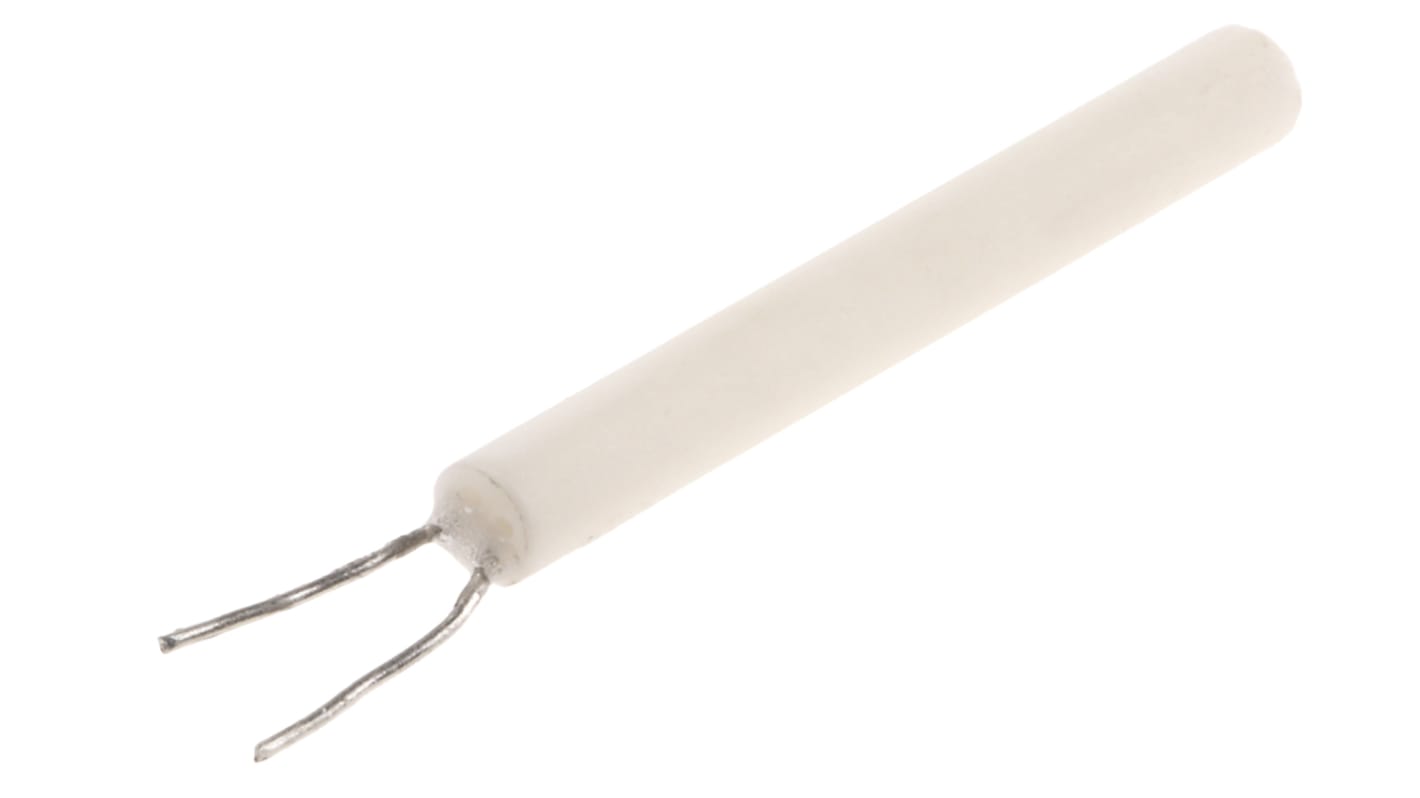RS PRO PT100 RTD Detector, 2.8mm Dia, 25mm Long, Probe, Class A +650°C Max
- RS 제품 번호:
- 611-7817
- 제조업체:
- RS PRO
대량 구매 할인 기용 가능
단가 개당
₩28,064.123
134 <재고있음> 5-9영업일내 홍콩 발송*
* 배송 날짜는 선택한 수량과 배송 주소에 따라 달라질 수 있습니다.
수량 | 한팩당 |
|---|---|
| 1 - 14 | ₩28,064.123 |
| 15 - 74 | ₩27,494.906 |
| 75 + | ₩22,647.937 |
- RS 제품 번호:
- 611-7817
- 제조업체:
- RS PRO
- COO (Country of Origin):
- GB
PT100 Wire Wound Detector
Pure platinum wires wound into a miniature spiral and located within axial holes in a high purity alumina rod. The freedom of movement of the platinum wire gives good long-term stability and a wide operating temperature range of -200 to +650°C. The detectors are cylindrical in shape and are ideally suited for mounting within a tubular metal sheath.
What is an RTD?
Single or dual element
Optimum performance and stability
Pt100 elements to IEC 60751 Class A or B
Optimum performance and stability
Pt100 elements to IEC 60751 Class A or B
An RTD is a type of temperature sensor based on the correlation between metals and temperature. As the temperature of a metal increases so does its resistance to the flow of electricity. This resistance can be measured and converted to a temperature reading. In a Pt100 RTD, the ’Pt’ stands for platinum (platinum wire or film) and ’100’ means that the temperature sensor has a resistance of 100 Ohms at 0°C. Platinum is the most reliable metal due to its linear resistance to temperature relationship over a large temperature range.
What is a Wire Wound Sensor Element?
This wire wound PRT sensor element consists of a pure platinum wire which is wound into a miniature spiral. This wire spiral is then located inside axial holes in a high purity alumina ceramic rod. The design of Pt100 sensor elements gives the platinum wire freedom of movement when it expands and contracts in response to heating. This produces increased stability and accuracy in the final temperature as it eliminates anomalies in resistance which can be caused by constricted wires. The only drawback with these Pt100 elements is that they are vulnerable to shock and vibration
Features and Benefits
• Long-term stability
• High accuracy
• Wide temperature measurement range of -200 to +650°C
• 2 lead wires
• Cylindrical shape ideal for insertion into housing or sheath
• High accuracy
• Wide temperature measurement range of -200 to +650°C
• 2 lead wires
• Cylindrical shape ideal for insertion into housing or sheath
Applications
These wire wound temperature sensor elements are suitable for use in a wide range of applications and industries
• Automotive
• Chemical industry
• Micro-electronics
• Air conditioning and refrigeration
• Air, gas and liquid temperature measurement
• Food processing
• Laboratories
• Chemical industry
• Micro-electronics
• Air conditioning and refrigeration
• Air, gas and liquid temperature measurement
• Food processing
• Laboratories
Frequently Asked Questions
How Does a PRT Temperature Sensor Work?
The PRT temperature sensor works by placing the sensor element (or process end) into the equipment or process that requires temperature measurement. As the temperature of the platinum resistance thermometer increases it’s resistance to the flow of electricity increases. For every increase per degree of temperature the electrical resistance also changes by a set ratio, this is called the temperature coefficient. For platinum, this ratio is .00385 ohm/ohm/°C which means for a Pt100 with a 100 ohm resistance the increase in resistance per degree of temperature would be 0.385 ohms. The total resistance reading can, therefore, be measured and converted into temperature.
How is the Resistance Measured?
The resistance generated by the temperature sensor is measured by passing current through one of the wires to produce a voltage. This voltage is then measured using a suitable bridge or voltmeter and the resistance calculated in ohms using Ohm’s Law (R=V/I). Once the resistance is known you can convert it to a temperature reading using a calibration equation or a Pt100 table. A temperature measurement device or calibrator can also be connected to the leads of the probe that will automatically convert the measured resistance into a temperature reading.
속성 | 값 |
|---|---|
| Sensor Type | PT100 |
| Probe Length | 25mm |
| Probe Diameter | 2.8mm |
| Minimum Temperature Sensed | -200°C |
| Maximum Temperature Sensed | +650°C |
| Termination Type | Solder |
| Probe Material | Platinum |
| Process Connection | Probe |
| Accuracy | Class A |
| Response Time | 0.4 s |

